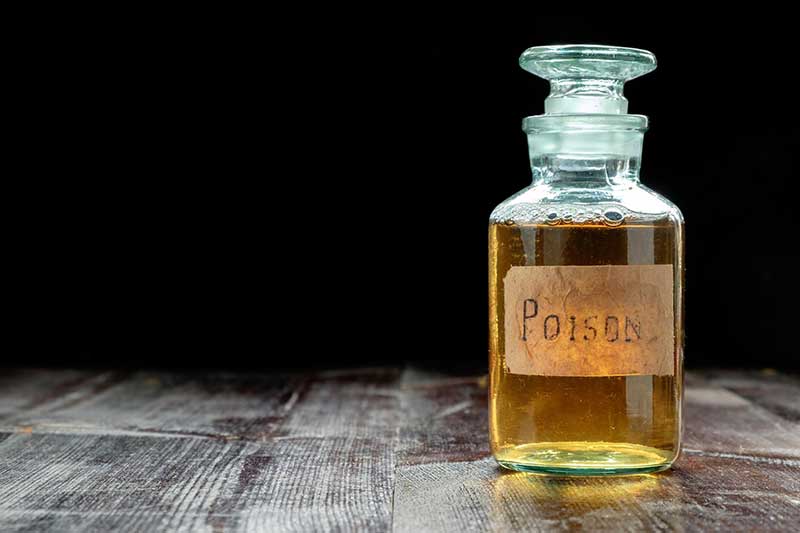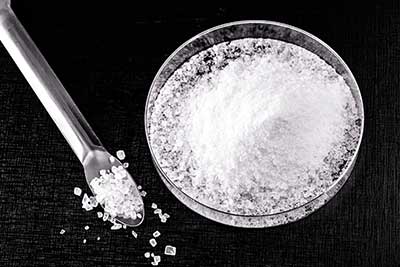
Cyanide is a highly toxic chemical compound that can be found in various forms in nature and industrial processes. It is a deadly poison that can cause severe damage to the body’s organs, leading to death in a matter of minutes. In this article, iqnect will discuss the symptoms, treatment, and prevention of cyanide toxicity to help you understand this hazardous substance better.
Introduction
Cyanide is a colorless gas or liquid with a bitter almond-like smell that is used in the production of a wide range of products, such as plastics, textiles, and pesticides. It is also found in some foods, such as almonds, cassava, and apricot kernels. However, these natural sources contain very low levels of cyanide and are not harmful to humans.

How Cyanide Affects the Body
When cyanide enters the body, it rapidly combines with enzymes in the cells, preventing them from producing energy. This affects the body’s vital organs, including the brain and heart, leading to serious health problems. The severity of the symptoms depends on the amount and form of cyanide exposure, as well as the individual’s health and age.
Symptoms of Cyanide Toxicity
The symptoms of cyanide toxicity can vary depending on the amount and form of exposure. However, common symptoms include:
- Rapid breathing or shortness of breath
- Rapid heartbeat or irregular heartbeat
- Headache and dizziness
- Confusion and disorientation
- Seizures and coma
- Nausea and vomiting
- Abdominal pain and cramps

Treatment of Cyanide Toxicity
ide toxicity is a medical emergency, and immediate treatment is crucial to prevent severe damage to the body’s organs and potential death. The treatment for cyanide toxicity involves administering antidotes, such as hydroxocobalamin, which helps to neutralize cyanide in the body. Sodium thiosulfate is also used to aid in the detoxification process. In severe cases, oxygen therapy may be necessary to support the respiratory system.
Prevention of Cyanide Toxicity
Preventing exposure to cyanide is the most effective way to prevent cyanide toxicity. This can be achieved through proper handling and storage of chemicals and by following safety procedures in industrial processes that use cyanide. It is also essential to avoid consuming foods that contain high levels of cyanide, such as cassava, which should be properly processed to remove cyanide before consumption.
Conclusion
Cyanide toxicity is a severe health hazard that can lead to serious health problems and death if left untreated. Understanding the symptoms, treatment, and prevention of cyanide toxicity is crucial to protect yourself and others from this deadly poison. It is important to follow safety procedures when handling and storing chemicals and to avoid consuming foods that contain high levels of cyanide.
FAQs
What are the common sources of cyanide exposure?
- Cyanide is commonly used in industrial processes, such as metal plating, mining, and chemical production. It is also found in some foods, such as cassava and apricot kernels.
How can I protect myself from cyanide exposure?
- Proper handling and storage of chemicals and following safety procedures in industrial processes can help prevent exposure to cyanide. It is also important to avoid consuming foods that contain high levels of cyanide.
What are the common symptoms of cyanide toxicity?
- Common symptoms of cyanide toxicity include rapid breathing or shortness of breath, rapid heartbeat, headache and dizziness, confusion and disorientation, seizures, and abdominal pain.
Is there a cure for cyanide toxicity?
- Immediate treatment with antidotes, such as hydroxocobalamin, is crucial in treating cyanide toxicity. In severe cases, oxygen therapy may also be necessary.
Can natural sources of cyanide be harmful?
- Natural sources of cyanide, such as cassava and apricot kernels, can contain high levels of cyanide and be harmful if not properly processed before consumption.
